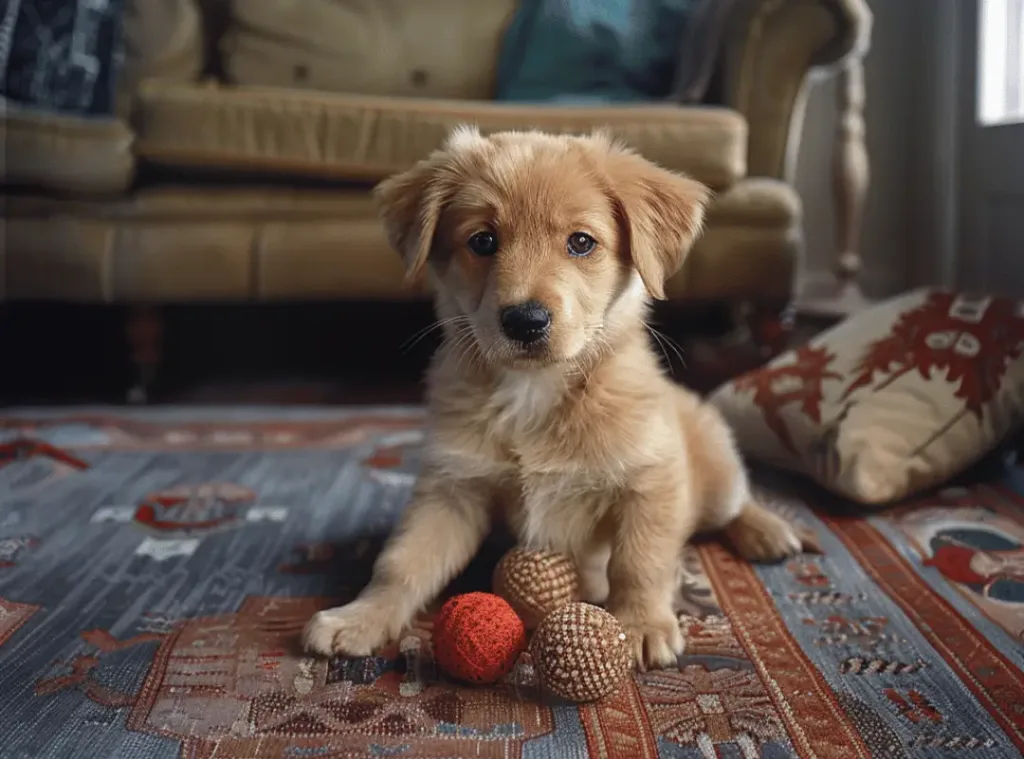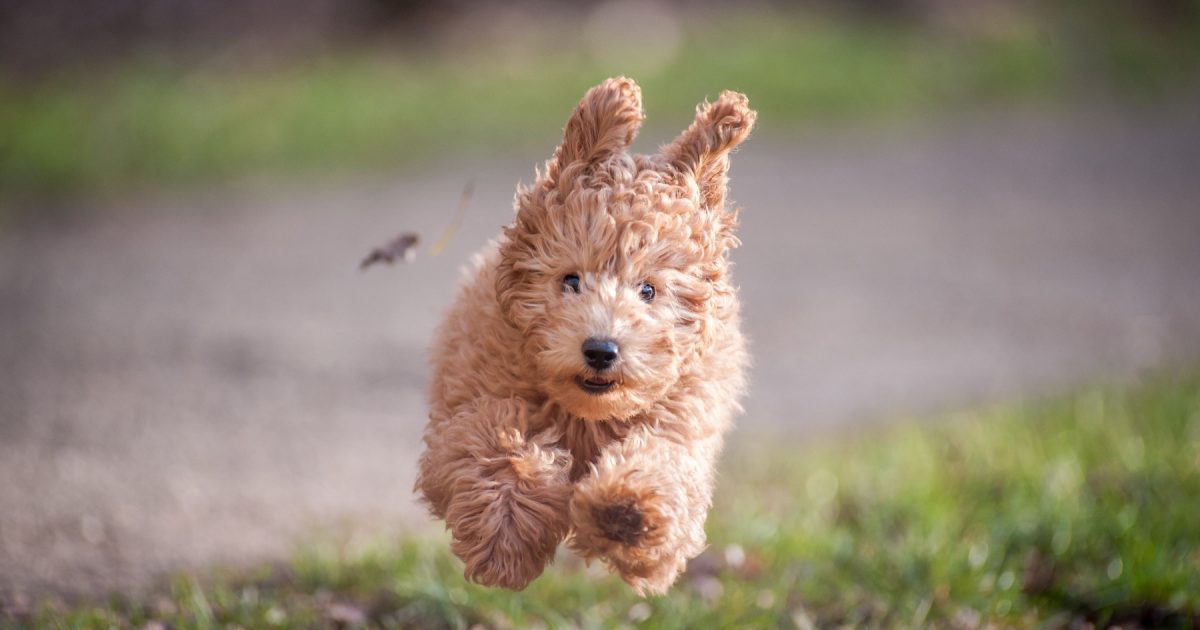Puppies need different kinds of training to help them learn how to behave appropriately. Although this training takes a lot of effort, going through it can help you form a closer bond with your puppy. Taking on puppy training in general might leave you feeling anxious before you even start.
🐾✏️ Not sure when to start training basics? We got you covered in this Puppy School Episode below on the best times to start puppy training.
If you’re ready to begin, use the following information to help you get started on different types of training.
9 Different types of puppy training
1. Obedience Training
Being able to follow commands is an important part of making sure that puppies are easy to live with. For example, a trained puppy who sits on command isn’t as likely to jump on people.
There are different ways for you to approach this type of training, such as clicker training or using hand signals. No matter which exact method you use, you should focus on positive reinforcement.
Positive reinforcement means that you’re helping your puppy form a positive connection between the command you give and what happens when it’s done. Whether you use treats, praise or a combination of both when your puppy obeys a command, they’ll soon learn that they get rewarded for listening. This makes puppies more likely to properly obey commands.
3. Clicker Training
Clicker training involves using a device that makes a clicking sound for teaching your puppy commands. This is a simple and straightforward way to get your puppy to successfully follow specific commands you give.

This type of training method works due to positive reinforcement. The idea is to use the clicker while speaking a command. When your puppy follows the command correctly, give a reward.
4. Basic Obedience Commands
What kinds of commands should you teach your puppy? There are a few basic commands that all dogs should know, such as “sit,” “stay” and “down.” Keep in mind that it might take several training sessions for your puppy to learn to follow these commands.
Puppies have a short attention span, so keep your training sessions to 3–5 minutes in total length. Your perseverance will be rewarded with a well-behaved pup not only towards you but also other people.
5. Puppy Tricks
Puppy training isn’t just about teaching obedience commands. Once your puppy has learned the basic commands, you can move onto teaching dog tricks. These puppy tricks, such as “play dead,” “roll over” or “shake hands,” add some fun to training while also challenging your puppy with learning things that are a bit more complex than basic commands.
6. Puppy Socialisation
Socialising puppies is an important part of training. This involves taking your puppy to new places and having them around new people and other dogs as often as possible.
Training classes like Puppy School give puppies a chance to be around other pups and meet new people. Bringing your puppy to a friend’s house or to a local park also provides more chances to socialise.

Remember though, not all dogs are social or have been trained properly. It is up to you as a responsible pet owner to look after your dog and understand certain situations where it may not be appropriate to take your dog.
When puppies are socialised, they have a lower risk of becoming anxious or aggressive when they’re in new places or around unfamiliar people or pets. Instead, they gradually get used to adapting to being in different surroundings and interacting with people or pets they have never met before.
7. Leash Training
Puppies that aren’t leash trained often pull when they’re out for walks. This can make these walks unpleasant for you and potentially unsafe for your puppy.
Puppies that don’t know how to properly walk on leashes might lunge toward another dog and get hurt or even pull hard enough to cause you to lose your hold on the leash.
Leash training involves teaching your puppy how to walk calmly on a loose leash rather than pulling. There are different ways to do this, such as using a special training harness or stopping the moment your puppy starts to pull and not moving again until they’re calm and at your side.
8. Crate Training
Teaching puppies to stay in a crate can be done as part of house training or to ensure that they have a safe place to stay when you’re not home. Getting your puppy used to being in a crate is the first step for this type of training.
To do this, make sure that you have a crate that gives your puppy enough space to move around comfortably, and fill the crate with a soft blanket and a few toys or treats.
Let your puppy first get used to being in the crate with the door open. When your puppy is comfortable with this, you can start closing the door. With proper crate training, your puppy will be able to spend time in the crate when needed without becoming nervous or anxious about it.
9. House Training
House training isn’t among the more fun types of training for puppies, but it’s a necessary one. This type of training involves teaching your puppy to eliminate outdoors instead of inside your home.
Keeping a regular feeding schedule can help make house training easier, since your puppy will need to go outside at roughly the same times each day. If your puppy has been crate trained, you can use the crate as part of the house training process.

Protect your puppy from accidents and injuries
Puppies learn at different speeds, and it might take your puppy longer than expected to understand what to do. Puppies easily stumble, get injured, or develop certain behaviour while training, which might add to your long list of worries.
To ensure your peace of mind, why not try our puppy insurance? Puppy insurance offers greater financial protection in case of serious health conditions.
💡 With Knose Puppy Insurance, you get the advantage of Lifetime Cover, which means there are no age limits once you have insurance. However, there are specific age criteria for starting the insurance policy. When purchasing a new Policy, the minimum age for entry is 6 weeks old and the maximum age for entry is 8 years and 364 days old.
It’s still worth considering given that we want the best care possible for our puppies. Looking for a full guide? We got your back!



